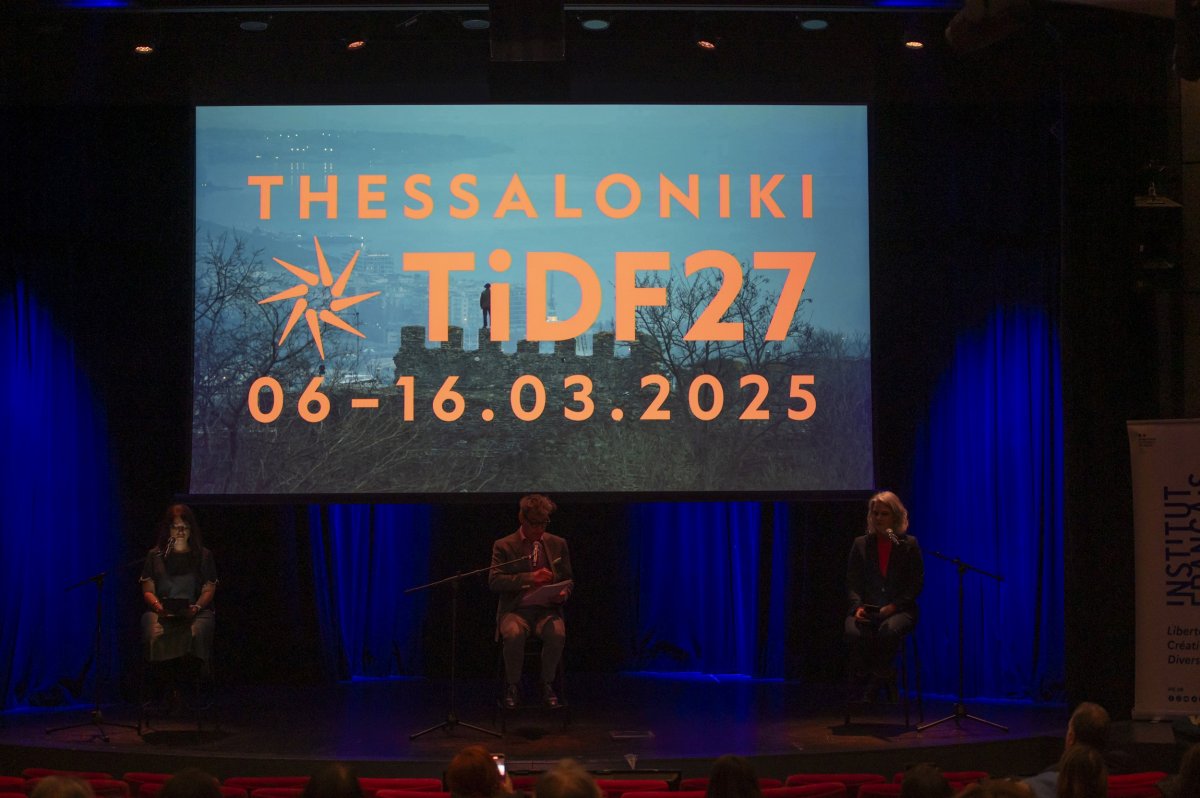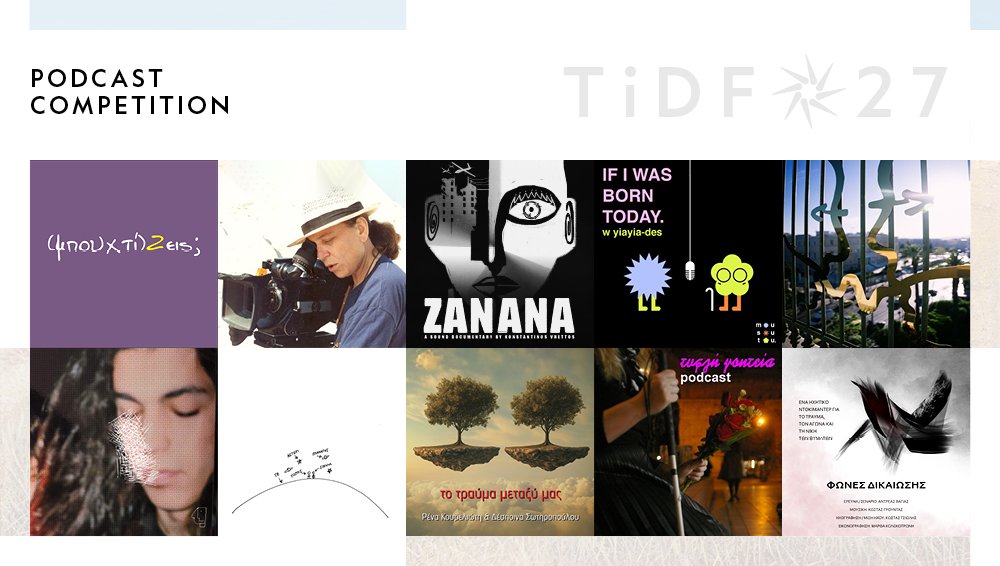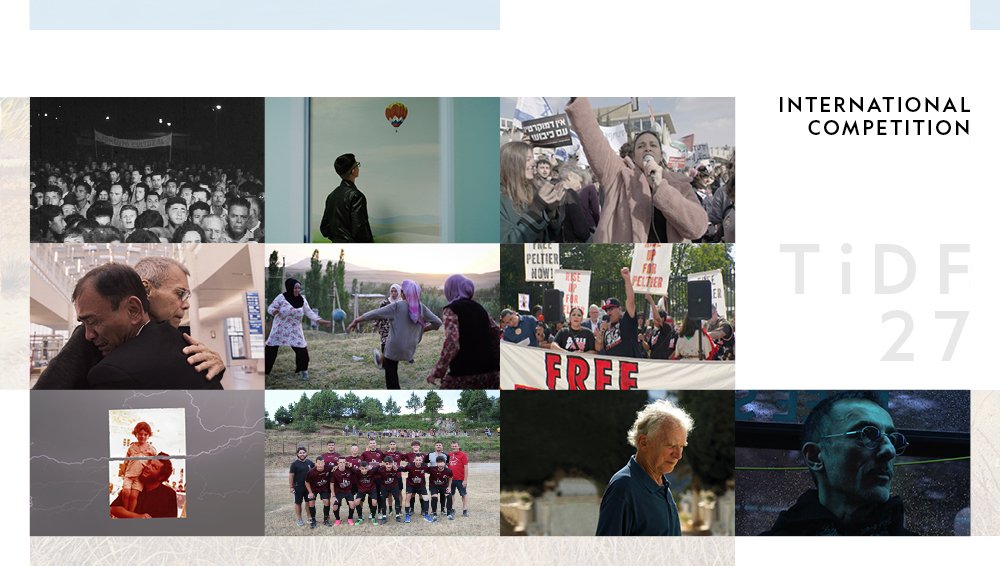As part of the Docs in Thessaloniki Pitching Forum 2015 of the 17th Thessaloniki Documentary Festival, a masterclass was held on Thursday March 19, 2015 at the Pavlos Zannas Theater titled “The North American Documentary Broadcast Market - an overview by Peter Hamilton”.
The masterclass, organised by EDN (European Documentary Network) and the Thessaloniki Documentary Festival – Images of the 21st Century, was presented by Peter Hamilton, of Peter Hamilton Consultants, Inc., which identifies partners, develops marketing strategies, and contributes to their successful implementation.
As Ove Rishoj Jensen, Web Editor & Film Consultant of EDN, who coordinated the discussion, noted: “For this year’s masterclass, we wanted to focus on North America and to discuss how directors could access that market. When we settled on the subject, we knew that there was no person more equipped to talk about it than Peter.”
After thanking the Thessaloniki Documentary Festival’s organizers for inviting him, Hamilton suggested that participants sign up for the free weekly newsletter on his website www.documentarytelevision.com. He then referred to his experience as an executive producer on A Shot to Save the World, a biographical documentary about Jonas Salk and the history of the polio vaccine, in which Bill Gates is the narrator. The documentary was produced by the Smithsonian Channel, where it premiered in the US. In Europe it will be aired by BBC Four.
Hamilton noted that directors should have a clear image of their goals and should have analyzed the profile of the TV channel that they want to approach as well as the profile of the channel’s audience. Filmmakers should also have a clear idea of who the buyers are for the channels they approach. The next thing they need to examine is whether it is a conventional TV channel, a cable network or an online subscription service and to see where they get their funding from (from advertising, subscriptions, public spending etc.) because, as he noted this “dictates what kind of programs the channels will want to purchase”.
As Hamilton explained: “Cable networks and satellite channels rarely purchase programs after they have been completed. They know their audiences so well because they map every minute of programming and they know what their audiences want to see. That’s why they prefer to join in the early stages of a program’s development, so they later have all the rights to use it. This has been the main model they have followed during the last 20 years. It is rare for them to try to acquire the rights for a production after it has been completed”.
Following this, Hamilton referred to the three types of classification that documentaries have on American television. “At the top of the pyramid are films I call ‘’premium’’, which may be nominated for Academy Awards or have gained exposure because someone famous appears in them. They may also be expensive productions and networks build their programming around them. Then there are the classic documentaries, narrations, based on archival materials and historical events as well as documentaries about nature, wild animals etc. But the documentaries that have seen the biggest increases in the field are the series that focus on a single character, or that use popular low cost formats, such as reality shows.” Hamilton explained, and added: “During the 80s and the 90s, when the big TV networks were still relatively new, they would present local providers of cable television with quality, informative programs, because these programs were more suitable for family viewing, in order to persuade them to buy these programs. When Discovery Channel acquired the permit to air such programs, the rest of the channels moved away from their commitment to air quality documentaries and turned their attention to character series and reality shows. There was a surge in the production of these kinds of programs and only recently it seems as though we have reached point of saturation.” Mr. Hamilton noted that directors of quality documentaries need a strong and sustainable platform in Europe, because in the US they have fewer chances of succeeding, unless they have subjects which are of interest to American audiences. “American networks are after series that offer more drama and conflicts. There is huge demand for series that show elements of sex or celebrities. Generally, people want to see shows, not films with specific subjects. The situation is disheartening. TV has evolved into a medium of entertainment”.
Hamilton then talked about the most successful networks in the US, including HBO, POV, PBS, TVO, Knowledge, the Smithsonian Channel and Netflix and analyzed the way they function. He presented four key points regarding American television: a) series that present people and don’t focus on subjects, b) films with important subjects, like disease or death, c) innovative topics, and d) the amount of time required to tell a complete story, so each episode is independent and can stand alone.
Regarding the pitching of a project, Hamilton explained that there are different stages: the pitching of a basic concept of the film can take place in an elevator if you happen to meet the person responsible for a network’s co-productions. The pitching can also involve a small sample of the character of the documentary, in the form of a video or via Skype, because producers don’t want to read things on paper, they want to see a sample as quickly as possible. Then there is the “sizzle tape” stage, where you “condense your story into three minutes presenting its strong points”. He also reiterated the importance of a collaboration with a strong partner, as a co-producer, agent or distributor, especially if a new filmmaker is taking his/her first steps in the US market.
In the final part of the masterclass, Hamilton referred to the intricacies of the US market regarding fictional series. “This is a major, billion dollar market which has been developing for three decades. In the beginning, the productions were for home videos, then they were for cable and satellite television networks. Reality shows stole audiences from fictional series. People are sick of watching the same old thing. During the last few years, the share of TV networks has shrunk, as audiences have been turning their attention to networks like Netflix, to subscription services and to video on demand. After three decades of development, documentary channels have experienced a decline in viewership, of around 40%. This means a loss of advertising revenue and, as a result, fewer funds being allocated to the production of new programs. TV networks have been terrorized”. Hamilton said networks are in the same transitional phase print media and the record industry found themselves in, because of the internet. “We are at a turning point. The moment of truth for the financial model of recent years is approaching. We are moving into a new era, where the funds of conventional TV networks are running out and we’re moving in the direction of a system of subscription and of an on-demand model.”















